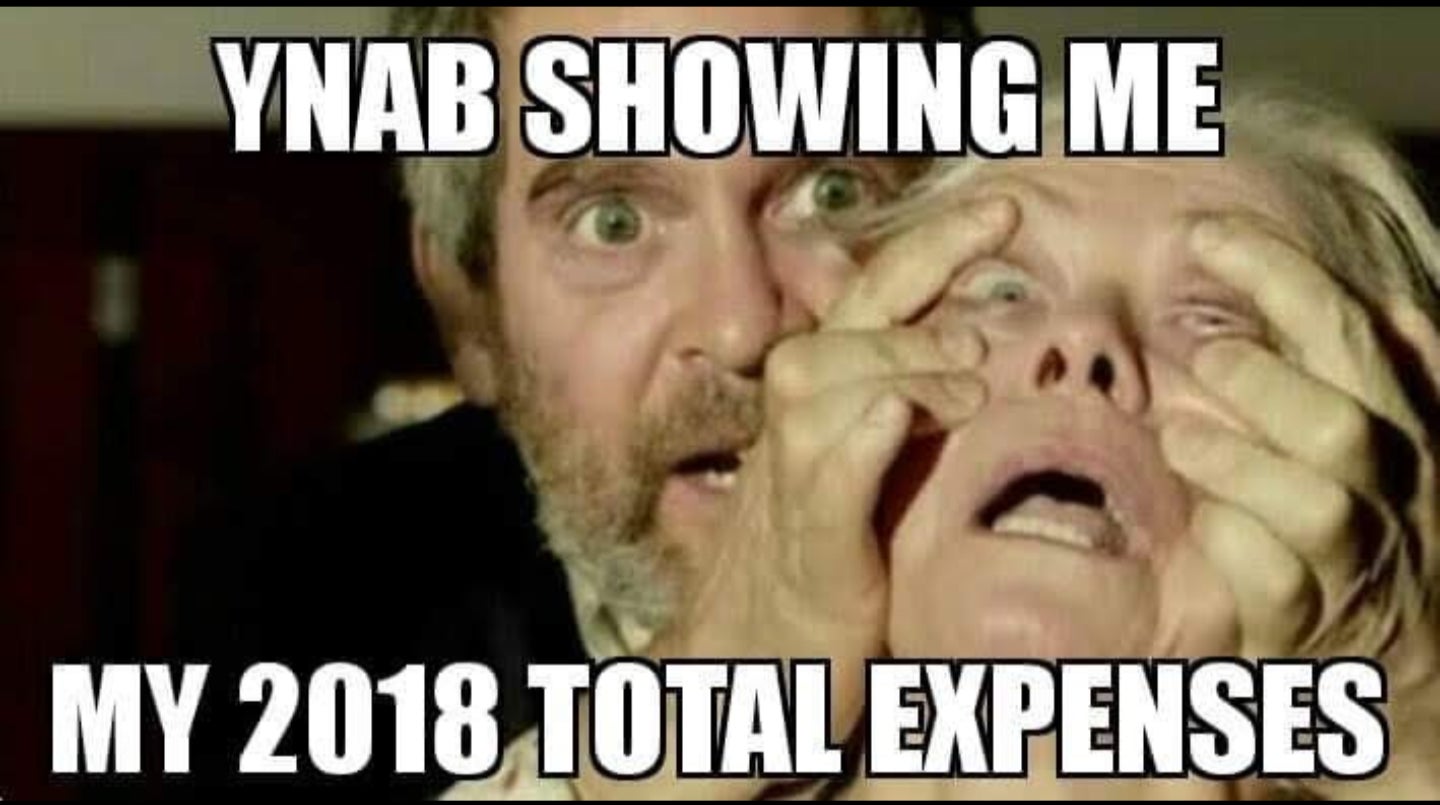Can an $84 app give you a financial makeover?


My mornings begin with a one-minute ritual easier than journaling and faster than meditation. I grab my phone and scroll through my inbox. Instead of emails, the inbox contains every purchase I made the day before. To get to Inbox Zero, I need to categorize them with a quick swipe. Starbucks Pumpkin Latte? Swipe to “Eating Out.” Netflix subscription? Swipe to “Utilities.” And that unexpected dental filling? Oops… not enough left in “Medical,” so I need to recategorize a little money that was in the “Clothing” category.
The app behind this peculiar ritual is called You Need a Budget (YNAB, pronounced WHY-nab). As its name suggests, YNAB is, at its most basic, a budgeting app. But with two books, two podcasts, a dedicated subreddit (75,000 followers), YouTube channel (53,000 subscribers) and Facebook fan page (44,000 members), YNAB has become a lifestyle. Part media platform, part cult, YNAB is the Goop of the personal finance world.
It may seem a little strange that such a rabid fan base would rally around budgeting of all things. To most people, keeping a budget just means restricting their latte intake. Those with a more sophisticated understanding can choose from hundreds of free budgeting apps out there.
So what makes YNAB, with its $84 annual subscription fee, any different? Who are these prototypical YNABers, and what on Earth could motivate them to debate how to categorize their chapstick purchases?
Maybe YNAB has such a cult following because it delivers on its promise to break users out of the cycle of living paycheck to paycheck.
Who needs a budget?
People use budgets to keep track of their income, spending, and debt repayments, often in the interest of saving money that can then be used for something big, such as buying a home, retiring, or taking that Hawaii vacation.
There are many different budgeting methods, varying in complexity, that people can choose from based on their financial objectives and their overall level of financial literacy. In their 2005 book All Your Worth: The Ultimate Lifetime Money Plan, the mother-daughter team Elizabeth Warren (yes, that one) and Amelia Warren Tyagi popularized the 50/30/20 rule, which allocates these percentages of income to needs (50%), wants (30%), and savings (20%).
There’s the Envelope Method, with which adherents physically allocate cash into separate envelopes representing categories such as groceries, eating out and gas; any unused cash rolls to the next month, but if you run out, you’re SOL. Financial Blogger Ramit Sethi recommends digitizing the envelope method by creating sub-savings accounts; the envelopes become actual bank accounts and your money automatically moves between them based on predetermined formulas (i.e. take 20% out of my paycheck and place it into my honeymoon fund).
You
probably need a budget.
But statistically, you probably don’t follow either plan. According to a 2016 survey from the financial institution US Bancorp, only 41% of Americans maintain a budget. And that’s because budgeting is about much more than what tool we use. You have to have the financial literacy to understand why budgeting is important, find a product that is easy enough for you to use, then form the habit to make it all stick.
Plus, you have to be willing to look directly at your money and keep it top of mind. Dan Ariely, a professor of psychology and behavioral economics at Duke University (and an investor at the banking app startup Qapital) explained to Quartz’s Jenny Anderson why so many people struggle to start and stick to a budget:
We are supposed to think about it and think of all the things we want to spend on now vs. later. But the reality is, we live in the moment and we make decisions in a myopic way without thinking about the big picture. It’s really, really hard. So we don’t do it.
In other words, tools are great, but if they’re not part of a broader framework, they won’t shift our behavior. Buying fancy running shoes won’t prepare you for a marathon if you don’t have a training plan. If there’s no unifying purpose pulling all the individual actions together towards one larger goal, there’s no way the habit will stick.
Consider one popular budgeting tool: Mint.com, a free app powered by the publicly-traded behemoth Intuit) reported on their website that in 2016 they had 20 million users. Mint is backwards-looking (and so your budgeting must be reactive). At the end of the month, it tells you how you spent your money. If you’re consistently overspending on food delivery, Mint will let you know, but it won’t help you come up with a plan to fix the shortfall in the future.
YNAB tends to work better than that because it’s a system. If that same overzealous consumer of Uber Eats were also a YNAB user, they would be forced move money out of another category to account for every penny of the shortfall, which means they’re more likely to change their spending patterns going forward.
Lindsay Burgess, YNAB’s chief marketing officer, told me via email that what differentiates YNAB is that it helps people “internalize [their budgeting] rules” and then money becomes “part of your life that you don’t even think about.” Just like a budget should.
Putting principles around your paycheck
YNAB was founded in 2004 by Jesse Mecham while he was in college pursuing his masters in accounting at Brigham Young University. There’s little information publicly available about the company, but we do know that it’s privately held and today has “just over 100 employees” according to Burgess. When you launch the app for the first time, it will ask you connect all your bank accounts and credit cards so that it can automatically pull inflows (paychecks, interest) and outflows (spending, debt repayment). Next, you’ll create expense categories (i.e. groceries, student debt payments, childcare), assign them spending targets and set up goals (take a vacation, pay down mortgage). As the month goes by, spending will be deducted from each category and if you overspend you’ll have to cure the deficit by moving money from another category. At the end of the month, everything resets.
In 2004, Mecham wrote a 213-page book called You Need a Budget: The Proven System for Breaking the Paycheck-to-Paycheck Cycle, Getting Out of Debt, and Living the Life You Want. In it, he details detailing this budgeting methodology, which Mecham summarized in four rules:
- Give every dollar a job
- Embrace your true expenses
- Roll with the punches
- Age your money
The first rule indicates that YNAB starts with the Envelope Method, but adds additional flexibility with rules two and three, and a constraint with rule four.
The second rule (“Embrace your true expenses”) acknowledges that spending is lumpy. Car repairs do not follow a monthly payment schedule and most of your vacation spending is probably concentrated within a few weeks of the year. This rule forces you to estimate these expenses and allocate cash to them (even if you aren’t spending it). That way, when it’s time to change that transmission, the money should already be there.
The third rule (“Roll with the punches”) adds some slack to the system and acknowledges that we can’t plan each month with precision. If you drop your iPhone in a pool and have to replace it, the app will present you with the option of taking some money from another category (like, say, eating out), or even rolling it forward and deducting it from next month’s paycheck. By adding a little flexibility, YNAB makes it easier to stick to your budget, even when things come up.
The last rule (“age your money”) is what separates YNAB from most budgeting apps. This is the rule that adds a buffer to your finances that enable users to break out of the paycheck-to-paycheck spending cycle. If you spend your money the day you get your paycheck, your money has an “age” of zero. Once your money has an age of 30 (which, according to YNAB, occurs on average within four months), you’ve always got one month of buffer should the unexpected happen. It’s forward-looking, not backward-looking, which helps people tightly regulate the cash they can actually afford to spend without compromising that buffer. Having that cash cushion is, at least in part, why people budget in the first place, and proponents of YNAB agree the app is better than others at helping them grow theirs.
The joy of exposure therapy
So many of us fall into that trap that Ariely talked about of not looking at the big picture. And for some, ignoring your money can turn into a more active avoidance, overspending or not checking your account balance out of fear or anxiety.
YNAB’s solution: exposure therapy. Every morning, your spending will be thrust upon you, waiting for your acknowledgement. It’s the app’s way of saying to you “I want you to honor the fact that you spent $11 on that cocktail with your co-worker.” You have no choice (unless you can live with the pesky red badge built into the app) but to look, then categorize, and then head on your merry way.
At first, it will be terrifying:

But soon you realize that staring down your spending when you have a plan is much less scary than when you don’t have one. And with time, that anxiety actually dissipates—for some, it even turns into joy.
The YNAB community has rallied around this joy of confronting their money without fear. You don’t have to look hard to find memes and excited YNAB-ers counting down the days until they get paid—not so they can spend it, but so they can allocate it to their YNAB categories. (Mint.com lacks comparable fervor— I searched hard for Mint.com memes but didn’t find any.)
And YNAB has fans spanning a wide swaths of the population: newlyweds trying to sync up their joint finances for the first time; college grads chipping away at their loans; extreme savers looking to FIRE (i.e. find Financial Independence and Retire Early); entrepreneurs trying to navigate volatile income streams; and yes, even longtime Wall Streeters, like yours truly.
I started using YNAB as a 38-year-old habitual money avoider and (hand on my heart) eagerly look forward to my daily dose of exposure therapy. I was drawn to the app after I became an entrepreneur and saw my income plummet. Despite having a cushion of savings, it felt irresponsible to just “trust” my instincts. I quickly realized that my spending was significantly higher than my finger-in-the-wind estimate. Nine months later, feeling clearer and more confident about my true spending, that stress turned into serenity.
For the 59% of Americans without a budget, committing and sticking to any system will have a disproportionately positive impact. Consider the following metaphor: if you never exercised, simply taking a daily walk would significantly improve your health. And while there are walkers, there are also people who seek to maximize their health outcomes, resorting to Soulcycle, Crossfit, or Ironman triathlons. YNAB’s blended approach of principles, gamification, and habit formation make it perfect for those looking to get the most out of each dollar—and have the endurance to do so.